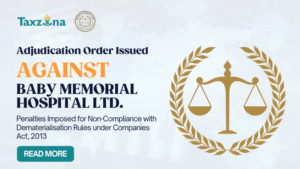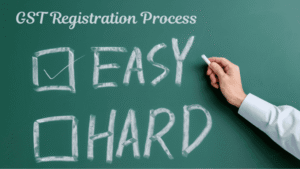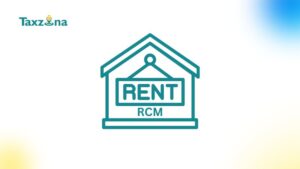When asked what is Business Accounting? Most people would probably ask, “What is corporate accounting?” Twenty-one Suggestions for Entrepreneurs
Taking care of company funds doesn’t have to be a major source of stress. It need not even divert you from the more introspective considerations that inspired you to launch the business in the first place.
As an alternative, the fundamentals of accounting software for a small firm can be boiled down to a handful of best practices and the production of just three key reports: These may sound like something a professional bookkeeper would be needed for, but that is not the case.
In order to have a clear picture of your company’s health and save time come tax time, use this accounting checklist as a guide. Read on for an in-depth education in the accounting practices of modern businesses. In case you’re already familiar with the material and just need to find your way to the relevant part, the following links might help.
What is Business Accounting?
Whether you’ve just started your own company or are entering your tenth year as an employer, you might be thinking, “what is business accounting?” The following is a brief explanation of what is business accounting:
Gathering and evaluating financial data on corporate activity, recording transactions, and creating financial statements are all part of the accounting process.
{Read More: accounting outsources services in Mumbai}
There are several good reasons why it’s crucial for businesses to have accurate accounting systems. Keeping track of your company’s assets, obligations, inventories, and other data can help you attract investors, prevent losses due to theft, and uncover opportunities for expansion. Bookkeeping, tax return preparation, and financial report writing are the main responsibilities of a small business accountant.
What is business accounting? This allows you to keep track of money and make smarter choices about how to spend it. In the beginning, many proprietors of small businesses try to cut costs by handling their own bookkeeping. If you find yourself in a similar position, a solid grounding in the fundamentals of business accounting is an absolute must.
Business Accounting Basics
It’s important to have a firm grasp of the fundamentals of corporate accounting to ensure the efficient functioning of your enterprise. You may be a Master of Marketing and sales, but you should never ignore the significance of sound bookkeeping.
To advance your company, you need a comprehensive knowledge of its financial situation. Please find a list of useful accounting concepts and what is business accounting principles mentioned below. Browse our articles on what is business accounting principles and terms for a deeper comprehension.
- Liabilities include amounts owed to creditors and vendors, such as those seen in accounts payable.
Money owed by consumers for purchases of products or services is considered an asset because of the customer’s legal obligation to pay.
Using accrual basis Finalisation of Accounts – 9 Things You Must Never Miss Out, a company would record sales as income and expenditures as costs.
A company’s assets include its cash on hand, receivables, inventory, furniture, equipment, and real estate.
A balance sheet, or statement of financial position, is a crucial financial document that provides a snapshot of your company’s financial health at the close of a given accounting period. Assets, debts, and equity all make up the balance sheet of a company.
With cash basis accounting, a transaction is recorded as “closed” once the cash has been received.
When using double-entry accounting, accountants record each transaction twice. One side lists the debits, while the other lists the credits, and they must balance.
Accounts payable, income taxes, wages, loans, and other accounts owed are all examples of liabilities a business may have.
The income statement, sometimes called the profit and loss statement, details the source and use of a company’s money during a given time frame.
How To Do Small Business Accounting
No matter the size of your company, from a one-person operation to a multinational conglomerate, accounting is a crucial function. Learn the fundamentals of business accounting so you can begin managing your company’s funds with confidence.
What is business accounting for a small business is keeping track of all the money coming in and going out so that projections can be made, invoices can be created, payroll can be processed, and taxes can be filed.
Accounting is a necessary evil, avoid These Common Mistakes In Writing Books Of Accounts. even if it isn’t what gets you out of bed in the morning. You need to keep up with your company’s financial records on a daily, weekly, monthly, quarterly, and yearly basis.
Financial record keeping, cash flow management, tax filing, and financial analysis are all essential for any organization, but not every small business can afford to engage a Certified Public Accountant (CPA).
If you’re looking for simple and straightforward business accounting software, go no further than Taxzona. Our business accounting software will help you streamline your operations, from handling your taxes to creating financial reports. Here is a list of the bookkeeping responsibilities that will fall on your shoulders at the company.
Daily Business Accounting Tasks
You don’t have a lot on your plate as far as the typical accounting needs of a firm are concerned. Though you have a large number of financial statements to evaluate on a weekly, monthly, quarterly, and annual basis, among other time intervals, your daily accounting duties involve only one primary responsibility.
1. Check Cash Position
Since money serves as the engine for your company, you never want to be low on it. The first thing you should do is take a look at your bank balance. It’s also helpful to have a rough idea of your income and expenses for the future weeks and months.
2. Record Transactions
Maintain a daily or weekly log of all financial dealings (invoicing clients, collecting payments, disbursing funds, etc.). While a computer spreadsheet or paper ledger can be used to keep track of business transactions, streamlined solutions like QuickBooks are available for smaller enterprises. The cost-effectiveness ratio favours the advantages and the level of control.
Weekly Accounting Tasks
There is a little more work involved in the weekly accounting tasks. All the fun stuff that comes with having a business bank account, like invoicing and tracking finances. Now is the time when an efficient accounting system becomes invaluable.

3. Document and File Receipts
You should keep records of all invoices sent, all cash received (including checks and credit card deposits), and all cash payments made (cash, check, credit card statements, etc.).
Initiate an alphabetized supplier file for quick reference. Make a file for payroll that is organised by the pay check date, and another file for bank statements that is organised by month.
Although it may be tempting to throw all paper receipts into a box and comb through them all come tax time, unless you have a very low volume of transactions, it is advisable to arrange individual files for various receipts as they come in. The use of physical files can be eliminated thanks to the scanning capabilities of modern accounting software and you must be having good knowledge of the difference between Accounting and Bookkeeping?
4. Review Unpaid Bills From Vendors
A specific file for overdue invoices from suppliers is essential for each company. Make sure to document all of your vendor invoices, payments, and due dates. It could be beneficial to take advantage of early payment discounts from your suppliers if they are made available.
5. Pay Vendors and Sign Checks
In order to avoid late fees and disgruntled employees, it is important to keep track of your accounts payable and have funds set aside to pay your suppliers on time. Optimally, payment terms of net 60 or net 90 days would be established.
Online or snail mail payments can be made easier by keeping copies of invoices sent and received in accounting software.
6. Prepare and Send Invoices
The terms of payment must be included. The term “Net 30” indicates that payment must be made on the invoice within 30 days. It’s harder to predict monthly revenue if there is no deadline. Our guide to prompt payment of bills has more information about how to expedite the payment process.
Monthly Accounting Task
Whether you have a seasoned or new business, a brick and mortar shop, or an internet store, you must perform several monthly accounting chores.

7. Review Projected Cash Flow
In the first year of operation, it is very important to keep track of your cash flow. If you know how much money you’ll need to pay bills, salaries, and supplies in the next weeks and months, you can set aside the appropriate amount of money. More so, you can be smarter about how you allocate your company’s funds.
A simple cash flow summary detailing your current cash balance, forthcoming cash receipts, and upcoming cash payments should do the trick. A cash flow statement is what you get.
8. Balance Your Business Checkbook
You need to know that the entries you’ve made for cash transactions in your business are correct and that you’re dealing with the correct cash situation, just like you do with your personal bank account.
When you reconcile your finances, any discrepancies, or omissions, whether on your part or the bank’s, are more likely to be uncovered and rectified before you need the money.
9. Review Past-Due Receivables
Include an “age” column to classify “open bills” according to their overdue status. Your overdue customer payments will be shown here for easy monitoring. Send late payment notices to clients, customers, and anybody else who owes you money at the start of each month.
Review this account once more at the end of your fiscal year to see which receivables need to be sent to collections or written off.
10. Analyze Inventory Status
It’s important to keep track of sales and determine which items should be restocked and which should be discounted or written off while managing inventory. It is simpler to make modifications such that you are neither under- nor overburdened if you check frequently (and compare to previous months’ numbers).
11. Process or Review Payroll and Approve Tax Payments
Be sure to withhold, report, and deposit the appropriate income tax, Social Security, Medicare, and disability taxes to the relevant agencies on the required dates while still adhering to your established schedule for paying your employees (typically semimonthly) in accordance with federal, state, and local laws.
If you want to prevent having to make modifications during the following paycheck period, review the payroll summary before payments are sent. In addition to saving you time, you can be assured that everything is done correctly when you outsource payroll services.
Use our no-cost paycheck calculator to determine the appropriate amount to withhold from each pay period’s earnings.
12. Review Actual Profit Loss VS. Budget and vs. Prior Period
You may see your income and expenses for the current month and the entire year on your profit and loss statement (P&L, income statement). You should compare this to your regular monthly or quarterly spending. When you compare your spending to your budget, you may see where you may be overspending or underspending.
In the absence of a budget, it is recommended that you compare the year-to-date profit and loss statement for the current period to the corresponding statement from the previous year in order to spot any discrepancies and make any modifications.
13. Review Month-End Balance Sheet VS Prior Period
You may see how well you’re handling your assets and liabilities by comparing the numbers on your balance sheet as of two different dates, say November 01, 2022, with those from November 30, 2021.
The trick is to find things that are much higher or lower than average and figure out why. If your accounts receivable has recently risen, for instance, this may indicate either faster sales or slower payment.
Quarterly Accounting Tasks
As Benjamin Franklin almost said, “ in this world, nothing can be said to be certain, except tax season and the importance of thorough bookkeeping.” (Just take my word for it and don’t fact-check that quote.)
The quarterly accounting tasks primarily deal with the overarching aspects of managing a small business or being self-employed: tax estimates, quarterly payments, and a constant reminder that you need an excellent of what is business accounting and its solution.

14. Prepare Revised Annual P&L Estimate
It’s time to take stock of your financial situation and determine whether you’re making or losing money, whether your net assets are growing or shrinking, how much of a difference there is between revenue and expenses, why that difference exists, and how you plan to spend the money you make.
While doing so, you’ll zero in on problem areas and implement solutions that boost revenue and profit margins.
15. Review Quarterly Payroll Reports and Make Payments
You are looking over the payroll reports from the past two months. Payroll reports and any leftover payments due every three months must be sent to the IRS and most states. The best option is to have your payroll agency prepare and submit these forms.
It is your responsibility to investigate all aspects of payroll to guarantee everything makes sense. See our What Is Payroll guide, written by CPAs, to make sure you’re up to par.
16. Review GST and Make Regular Payments
If your business is located in a state where sales tax is required, make sure you comply to avoid harsh fines. Your state tax requirements can be determined with the aid of the U.S. Small Business Administration (SBA). Additionally, you may estimate sales tax using our free tool. For GST guides, you can click here.
17. Compute Estimated Income Tax and Make Payments
Most states and the Internal Revenue Service collect income taxes. Check your year-to-date profit and loss statement to discover if you have any quarterly projected tax payments due. In the event that you need help, your tax preparer can provide it to understand the concept of what is business accounting.
18. Review Past-Due Receivables
It’s now time to review sizable accounts receivable that haven’t been paid and make a decision about whether to write them off, send them to a collection agency, or hope that the customers will pay eventually.
19. Review Your Inventory
Think about what you still have in stock and how much it’s worth. Your annual tax bill will be reduced by the amount of any write-downs you’ve had to take on stock. Overstating your inventory balance and paying additional taxes that aren’t owed can be avoided if you take the necessary steps to write down unsold stock.
20. Fill Out IRS Forms W-2 and 1099-MISC
Full-time workers’ (W-2) and most independent contractors’ (1099s’) annual earnings must be reported to the Internal Revenue Service by January 31. (1099s). To meet this deadline, you must have copies of the tax forms mailed to your employees.
Any independent contractor earnings below $600 are exempt from submitting a Form 1099. Think about using an online filing service to save time and prevent mistakes.
Read our post on 1099 vs. W2 forms to learn more about how to tell the difference between independent contractors and employees.
21. Review and Approve Full-Year Financial Reports and Tax Returns
Before handing them over to the tax man, make sure you’ve thoroughly gone over the previous year’s financial statements. Check the accuracy of your return against your year-end financial statements before signing it. You, not your accountant, will be held responsible for any unpaid taxes, penalties, and interest uncovered by an Internal Revenue Service audit of your business.








